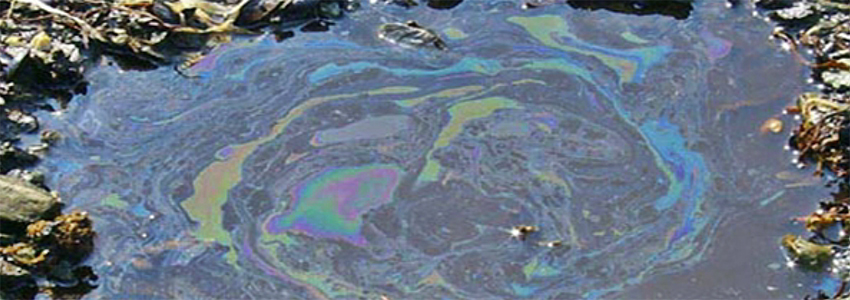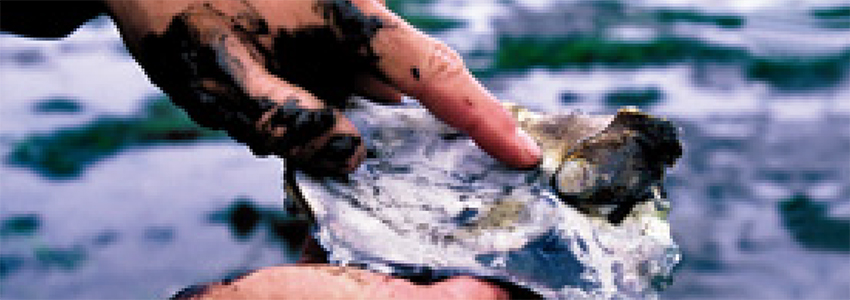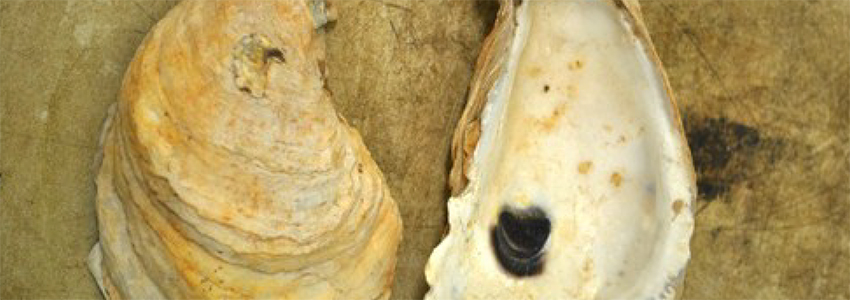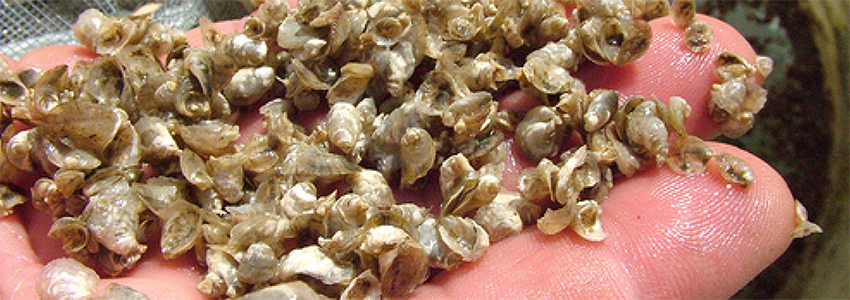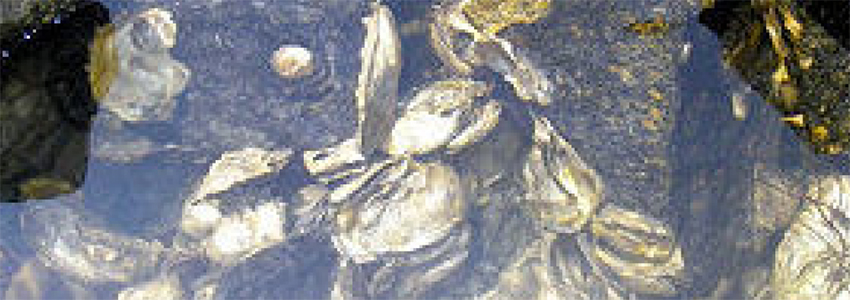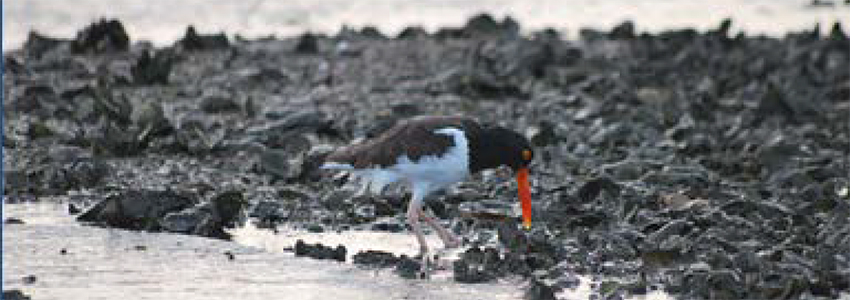The elementary portion of the Oysters on the Chesapeake Bay learning sequence consists of six lessons; one for each grade in Kindergarten through 5th. Each lesson targets an important area in the study of oysters: individually, as part of an ecosystem, and in oyster restoration. While not directly building on each other, the lessons incorporate age-appropriate skills used in previous lessons and build new skills.
Kindergarteners begin by learning about pollution in water, and in subsequent years build knowledge about oyster shells, oyster reefs, and oyster internal anatomy. By fifth grade, students consolidate their learning, examine other perspectives, and demonstrate their mastery of ecological principles. They investigate and communicate conflicting interests in oyster harvest and restoration and learn how science can be helpful in navigating the complexity of biological and sociological interactions.
The lessons are an introduction for educators to creating three-dimensional learning activities for their students that incorporates the K-12 Framework for Science Education with connections to Common Core, and the Maryland Environmental Literacy Standards. A team of educators from the Chesapeake Region created the framework and wrote the activities in the sequence: Dale Glass (National Presbyterian School), Shannon Ricles (Monitor National Marine Sanctuary), and Molly Harrison (NOAA Fisheries Service/National Ocean Service).
There are six grade levels in the unit:
- Grade Level K: From Dirty to Clean in 15
- Grade Level 1: Oysters - The Tale of Two Shells
- Grade Level 2: A Perfect Home
- Grade Level 3: It’s a Group Thing
- Grade Level 4: What’s Inside? A Simple Oyster Dissection
- Grade Level 5: The Great Oyster Debate
Grade Level K: From Dirty to Clean in 15
Teaching Time: 2 20-minute sessions
This activity teaches students about water pollution and cleaning
polluted water with filters. Oysters filter nutrients out of water and
clean water at the same time.
Students will be able to:
- Explain the importance of clean water to living organisms.
- Explain how oysters clean water.
Essential Question: What role do oysters play in cleaning the water of the Chesapeake Bay?
Materials
- Clear tub or basin
- Clean tap water
- Clear plastic cups (2 per student group)
- Rubber bands (1 per student group)
- Filtering materials (coffee filter, cheesecloth, etc.)
- “Pollutants” (for example: food coloring, pieces of plastic grocery bags, pencil shavings, foam peanuts)
- Student response sheets 1 and 2
Teacher Note: This activity can be used as an introduction to how oysters filter the Chesapeake Bay.
Grade Level 1: Oysters – The Tale of Two Shells
Teaching Time: 2-30 minute sessions
Students learn the anatomy of an oyster’s shell and the role of the shells in protecting the oyster.
Students will be able to:
- Label the exterior parts of the oyster.
- Explain the importance of the oyster shell in protecting the animal.
Essential Question: What role do oyster shells play in protecting the oyster?
Materials
- 2-4 oyster shells per group*
- At least one shucked oyster
- Chart paper
Per Student
- Ruler or standard unit of measure object, such as a Unifix cube, paper clip or penny
- Blank paper (1 sheet)
- Pencil and/or markers
- Oysters on the Half Shell activity sheet (p. 5)
- Scissors
- Glue
- Various items described in Part 2 below
*Teacher Note:
Oyster shells have very sharp edges. Acquire shells that have been worn and have smooth edges to avoid injury.
Grade Level 2: A Perfect Home
Teaching Time: 3-5 30-45 minute sessions
Students learn about oyster reef building and the inhabitants of oyster reefs. They build model reefs using everyday materials and refine their designs based on additional information.
Students will be able to:
- Explain the role of Eastern oysters in the Chesapeake Bay.
- Explain the importance of an Eastern oyster reef to oysters.
- Use a model and a diagram to explain an idea.
Essential Question: How can we clean the water of the Chesapeake Bay to improve the habitat for plants and animals?
Materials
- 1-2 live Eastern oysters, Crassostrea virginica, Eastern oyster shells
- Glass aquarium or other container
- Images or video of oysters with and without reefs
- Video of oysters filtering water (see Day 1 Exploration)
- Science journal
- Drawing paper
- Chart paper
- Craft construction supplies described in Day 2 Exploration
- Copy of the Student Resource for each student
Grade Level 3: It’s a Group Thing
Teaching Time: 3 -5 minute sessions
Students learn about the properties and functions of oyster reefs by building and testing models of reefs. They also learn about the importance of reefs to oysters.
Students will be able to:
- Explain the function of healthy Eastern oyster reefs.
- Explain why being part of a healthy reef helps Eastern oysters obtain food, defend themselves and cope with changes.
Essential Questions:
- What role do Eastern oyster reefs play in the Chesapeake Bay?
- How and why is a reef structure beneficial to the Eastern oyster?
Materials
- Oyster shells (at least one per student) or photos of oysters
- Chart paper
- Plastic tubs (6-8)
- Water
- Legos
- Straws
- Sculpey or other plasticine clay
- Student science journals
Grade Level 4: What’s Inside? A Simple Oyster Dissection
Teaching Time: 3-4 45 minute sessions
Students will learn about the internal and external structure of oysters as an example to help them understand that all organisms have parts that help them survive and grow. They will also learn how the functions of the oyster help the ecosystem in which it lives and the benefits to humans.
Students will be able to:
- Explain how an oyster eats.
- Explain how and why the functions of oysters are critical to the Chesapeake Bay ecosystem.
Essential Question: Why is the Eastern oyster important to the Chesapeake Bay ecosystem and to the people of Maryland and Virginia?
Materials
- Oyster shells (at least one per student) or photos of oysters (included in lesson)
- 2-3 live oysters if possible
- Aquarium or other large container
- An open oyster with both shells for every pair of students
- Paper or plastic to cover student desks
- Hand lens for each student
- Paper towels
- Hand sanitizer
- 1 whole oyster for every 2 students
- Gloves (latex or nitrile)
- Safety goggles
- Wax paper or dissection trays
- Student Resource Sheets 1 and 2
- Problem statement sheet for each student
- Student science journals
- Resources to support Extension section
Grade Level 5: The Great Oyster Debate
Teaching Time: 45-90 minutes
Students will consolidate their learning, examine other perspectives, and demonstrate their mastery of ecological principles. They realize there are conflicting interests, but that science can be helpful in navigating the complexity of biological and sociological interactions.
Students will be able to:
- Integrate learning and demonstrate understanding of current ecological issues.
- Argue an issue based on scientific principles and not belief.
- Apply scientific knowledge to social and economic issues.
Essential Question: Would the health of the Chesapeake Bay improve if the Asian Oyster were introduced?
Materials
- Handouts
- Optional:
- Live oysters
- Aquarium or other clear-sided container with brackish water
- Dirt (silt)
 An official website of the United States government.
Here's how you know we're official.
An official website of the United States government.
Here's how you know we're official.
